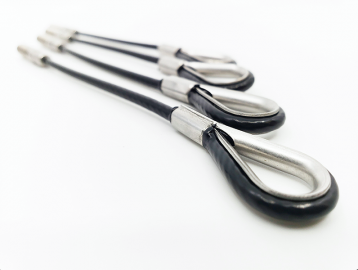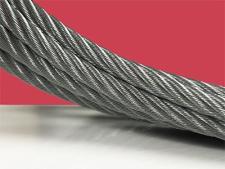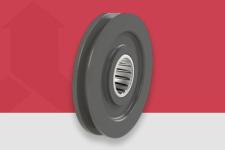What are Exoskeletons?
Exoskeletons are wearable, mechanical devices created to restore missing motor function, and/or increase strength, dexterity and support to targeted muscles and joints. Exoskeletons can be made to support virtually any area of the body and are produced to transmit better or total functionality to areas of the body such as the back, shoulders, arms, legs, hands, fingers and feet.
Exoskeletons serve two fundamental purposes: restore or enhance support to the directed limbs, muscles and joints, while also extending the period of time before fatigue would typically set-in. Once in place, the exoskeleton wearer experiences anything ranging from a total return of mobility, to precise and prolonged increase in strength and tolerance of loads while undertaking occupational tasks.
Because exoskeletons are made to support motor function in both the workplace and limb different populations, these fascinating innovations represent an exciting new possibility in restoring and boosting mobility in wearers.
Industrial Exoskeleton Applications
In industrial applications, exoskeleton wearers may keep their arms extended above their heads for far longer periods for instance, than they could without the aid of such supportive technology. Now, workers who elevate their arms above their shoulders or out in front of their torso, as a matter of daily workload, can do so for extended periods of time, with less fatigue and decreased risk of long-term soft tissue damage. So, in the case of warehouse pickers or auto repair professionals, each of which use their upper bodies to support tools, materials and their very own arms, exoskeletons can reduce the weight of objects dramatically, making for example, a 50 lbs. box, feel more like it only weighs 10 lbs. This reduction of stress on the affected joins, limbs and muscles permits workers a safer and more productive experience on the job.
Medical Exoskeleton Applications
Conversely, in the case of individuals with missing limbs, exoskeletons are making enormous strides toward returning entire motor function to such populations, thus restoring mobility where perhaps there was absolutely none. So, in the case of a person with a congenitally missing limb or perhaps one lost in tragedy, exoskeletons are restoring the freedom of body motion that those of us with full mechanical faculties may take for granted.
Because exoskeletons clearly have many applications and possess the potential to restore or increase motor performance to underserved, limited or at-risk populations, these exciting devices represent a rapidly emerging industry that is expected to grow from $310 million (2019) to almost six billion by 2027.
Exoskeleton Cable Construction
There is no one-size-fits-all wire rope construction for exoskeletons. And while there are some typical standards, such as 304 or 316 stainless steel cable, the cable’s construction is a matter of specific device design. A 7x7 construction for example, will yield much less constructional stretch, which is desirable in many exoskeleton designs, but the cable will likewise be far less flexible. If the exoskeleton’s design calls for mechanical cable making turns over pulleys with tight radii, 7x7 could be an issue due to its rigid characteristics. In a 7x19 or 7x49 construction however, the flexibility is far more present, making tight corners and traveling over pulleys much easier. But, the trade-off is that in 7x19 and 7x49 cable constructions, the constructional stretch is also more present, meaning engineers must ensure the desired flexibility does not come at the cost of too much stretch.
As mentioned, exoskeletons often need to make tight turns around pulleys, as well as other actuating components and mating parts. All of these considerations combine to help the device’s appendages move fluidly in concert with the wearer. Added to such a sophisticated set of application demands is the need for the mechanical cable assemblies themselves to be both light-weight and compact. In no time at all, it becomes easy to see just how intricate an exoskeleton’s design requirements become.
So the cables facilitating motion in the wearer’s exoskeleton must be flexible, but not too much so. They must be small in diameter and supportive over narrow bending radii, but not so much that construction stretching loosens components appreciably.
Most importantly, the device must perform perfectly over a span of thousands of cycles, but even that’s not good enough.
Exoskeleton Mechanical Cable Material
The use of stainless steel wire rope is ideal in exoskeleton applications because the wearer is likely to perspire, or perhaps even expose the unit to environmental conditions that the maker cannot necessarily account for in full.
Perhaps the wearer is exposed to damp weather, or humid work conditions. Maybe the wearer merely sweats on the job. In any of these scenarios, the exoskeleton is exposed to moisture. 304, or ideally 316 Stainless steel is well-known for its resistance to wet conditions. And even if ocean water is present, which can be extremely corrosive due to salt content, these grades of stainless steel mechanical cable can withstand prolonged exposure to such potentially harmful surroundings.
Takeaways
-
Exoskeletons are a relatively new advancement in technology
-
Exoskeletons can be used to both or either restore entirely lost mobility, or support mobility in individuals or workforce
-
The cables that power exoskeletons possess a long list of complex design requirements
-
Sava has manufactured mechanical cables for exoskeletons since the beginning of the industry
Contact Sava
When deciding on mechanical cables, the construction and characteristics needed for a specific application, it is necessary to choose a manufacturer with a proven record supplying that industry. In the case of exoskeletons, Sava is such a cable manufacturer. Sava has been making motion cables for exoskeletons since the start. Contact our engineering team today and let’s get started bringing your exoskeleton innovation to market now.






